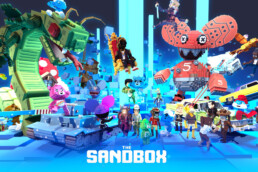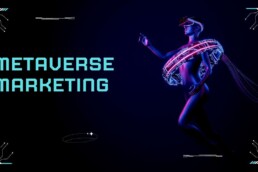The Metaverse promises to revolutionize the way we live and work over the next decade but just why are so many companies beginning to advertise and build a following there?
What Brands Want
When a brand makes an investment into any kind of marketing, its main measurement of success is how much engagement the investment generates.
Investing in the Metaverse is very different from direct response advertising which aims to create a response from a viewer immediately after seeing an advert. Investing in the Metaverse is more commonly aimed at gaining mindshare from a younger demographic, planting a seed so when their earning power increases they’re familiar with the brand, already trust it and likely to make a purchase.
It’s more similar to the product placement that takes place on social media today where brands pay influencers to put products in the background of videos to familiarize viewers with the product and associate it with something or someone they already enjoy watching.
Given the nascent state of the Metaverse, brands are still learning the most effective ways to advertise in it and what kind of targeting works best in a virtual world. Although these investments may seem arcane to some, there’s actually a long history of brands investing in innovative marketing and this is just the next step in that process. In this article we’ll look at how the next generation of web technologies fits into this.
Why Advertise in the Metaverse?
If the Metaverse becomes as big as many are predicting then getting first mover advantage in the space will be hugely profitable. Citi, one of the world’s leading banks, says the Metaverse economy could be worth $13 trillion by 2030 and provide huge economic benefits to companies involved in the space.
If a brand’s target audience includes young adults then advertising in the Metaverse offers a great opportunity for these brands to generate engagement amongst this demographic and the next generation of shoppers.
Advertising in video games has existed for years. Two of the most famous examples are Disney recreating the world from the movie Tomorrowland and Verizon building a working phone, both took place in Minecraft. The second of these generated 16 million views on Youtube and left many viewers in awe of how it was even possible. Calculating a direct return on investment for these projects is difficult but the amount of publicity generated in articles by news outlets regardless of the project itself would suggest it is extremely cost effective for the company building the project.
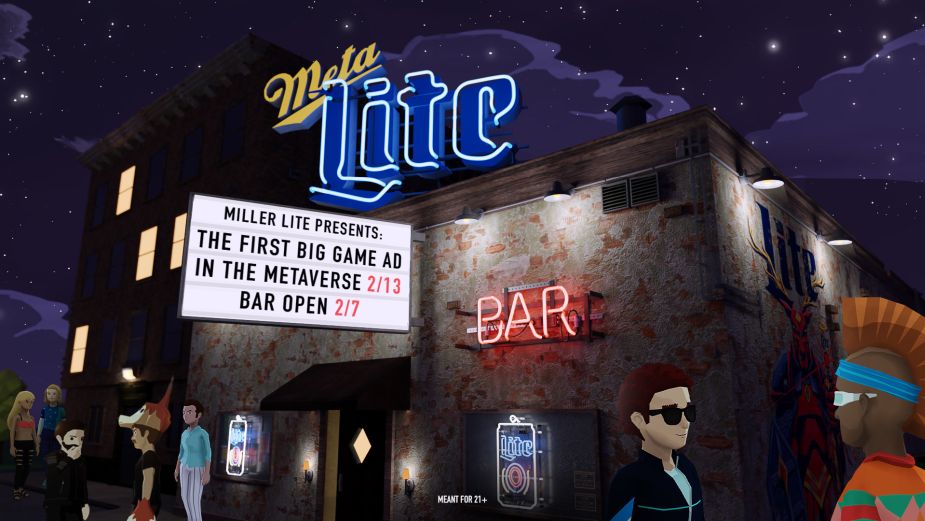 Miller Lite’s bar in the Metaverse
Miller Lite’s bar in the Metaverse
Engagement in the Metaverse has been shown to be much higher than with other forms of advertising. US brewer Miller Lite hosted its Superbowl ad in Decentraland by building a virtual bar to create engagement with the brand and showed its ad on the TVs there.
Users in the bar spent an average of 20 minutes engaging with the ad, which used extreme dramatization and an avatar host to create engagement, and enjoying a virtual Miller Lite beer in the bar. Miller Lite has said “we’ll definitely be playing in this space again”. Getting users to engage with an ad for 20 minutes is a phenomenal achievement and shows the power of this medium to help connect brands and consumers.
There are however many ways for brands to advertise in the Metaverse and it’s not entirely clear yet which is the most effective given the early stages of the technology.
How Are Brands Advertising in the Metaverse?
NFT Drops
One of the defining features of the Metaverse is the in-world ownership of assets via NFTs and the ability to trade them with other users. Items in most video games today are highly fungible and knowledge of prior ownership is often impossible.
The Metaverse however is not like a video game and offers brands access to an extremely broad audience pool and much higher levels of immersion than video games do. The Metaverse, through NFTs, also provides scarcity and the ability to trace item ownership history. This can make certain items more valuable if they were previously owned by someone famous and can remove the risk of theft via the blockchain’s public ledger.
One company using NFTs to grow engagement and brand awareness is Adidas. It sold its “Into the Metaverse” wearable NFTs along with physical clothing. Buyers can use the NFTs in the Metaverse and wear the same clothing in real life. Adidas claims this will help them “celebrate ideas that are defining a new age of originality” and position them at the forefront of creativity in the development of Web 3.0. The company earned more than $22 million from the sales in a single afternoon and has further plans to create more brand engagement within the space.
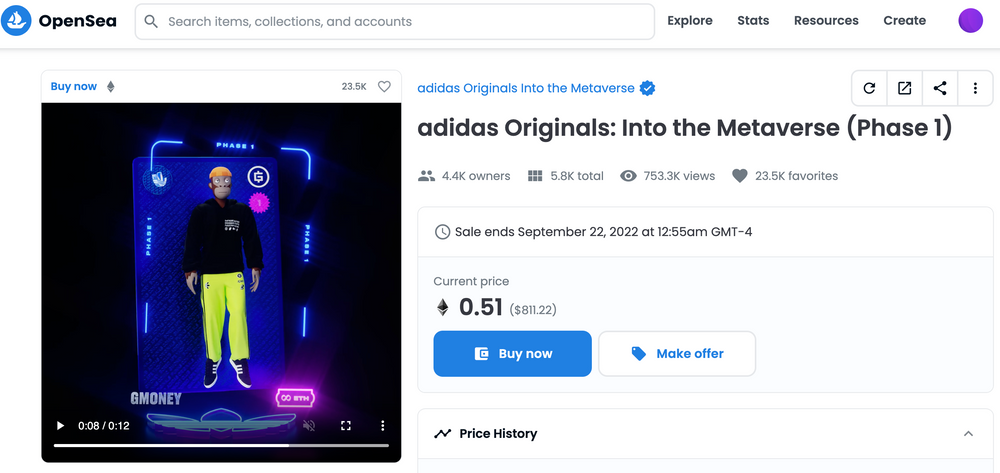 adidas Originals: Into the Metaverse on OpenSea
adidas Originals: Into the Metaverse on OpenSea
Immersive Experience
Another way to build brand awareness is by creating one-off experiences in-game. When Coke released its limited edition and “pixel-flavored” Coke Zero Sugar Byte flavor in April 2022 it first premiered in Fortnite. Coke partnered with gaming company PWR to create Pixel Point Island where users can play games and view promotions for the new Coke flavor.
Netflix has also ventured into the Metaverse space via Decentraland with its promotion of “The Gray Man”. “The Electric Factory” will allow users to navigate a labyrinth using their knowledge of the movie’s plot. The film’s music will play in the background and actor Ryan Gosling will provide instructions upon a user entering the world. Once a user completes the labyrinth they can select a free wearable NFT from the movie for their avatar as a way to remember and show participation in the event.
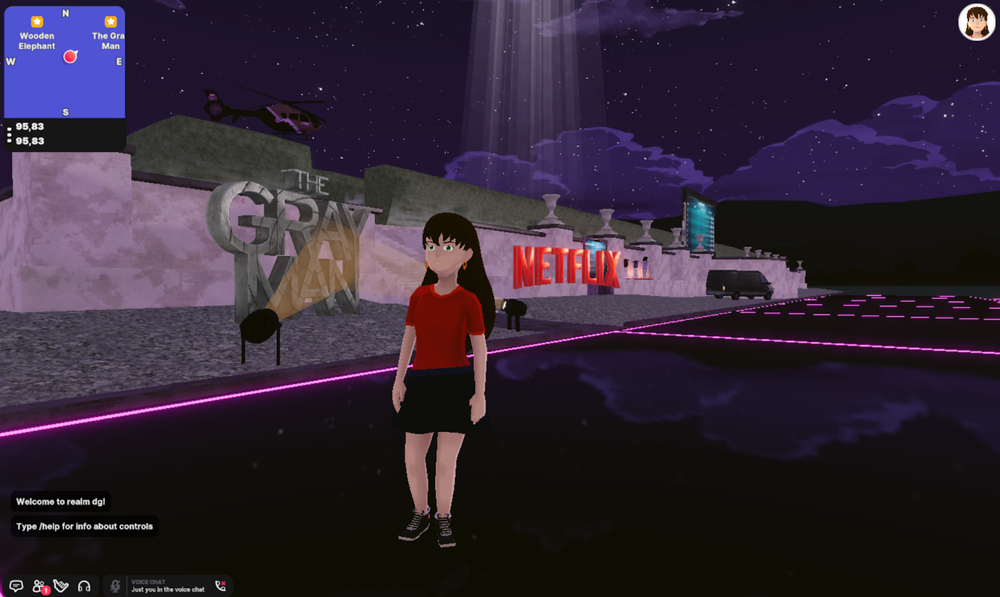 Blockworks reporter Ornella Hernandez’ avatar in Decentraland outside the Netflix and “The Gray Man” maze.
Blockworks reporter Ornella Hernandez’ avatar in Decentraland outside the Netflix and “The Gray Man” maze.
Immersive Worlds
One of the best known investments in the Metaverse came from Snoop Dog. The famous rapper is part of a team developing the “Snoopverse” immersive world in The Sandbox metaverse. Early access passes into the Snoopverse began in December 2021 and are currently selling for ~$685. Samsung, Nike and Mastercard have also entered the world to try and build engagement with their brands.
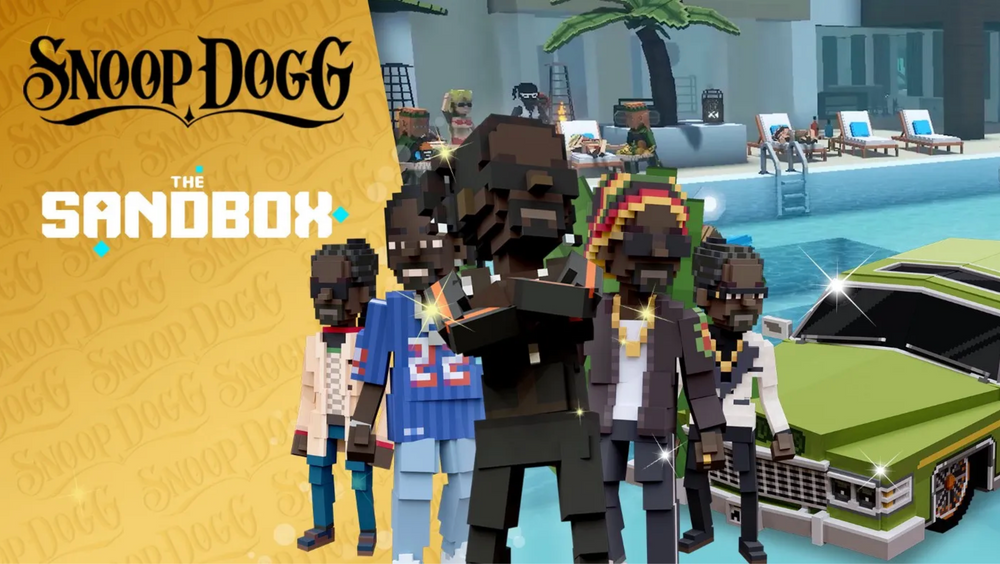 Snoop Dogg promo for Snoopverse in The Sandbox
Snoop Dogg promo for Snoopverse in The Sandbox
Is It Worth It?
There’s clearly a great deal of opportunity in the space for brands and a plethora of ways to build a following using the Metaverse but is it really worth the investment?
Given the immersion created by the environment it seems very likely that advertising in the Metaverse is a cost efficient way to increase user engagement, especially compared with many of the more common advertising techniques today such as online ads or mass advertisements through billboards or TV. The value of building a following in the Metaverse early on could also be huge given its projected growth but there’s a lot of uncertainties at present around its development and just how successful it will be.
Should the Metaverse grow to be as big as some predict, the brands that built early followings stand to reap massive rewards both in influence and economic terms.
Get more insights like this on the business and marketing of the metaverse delivered to your inbox. We’ll never spam you, ever.
Harry Harrison
After spending 3 years traveling around Australia and Asia I began writing about finance whilst stuck at home at the beginning of 2020 thanks to Covid. I've always had a strong interest in business and technology and he thoroughly enjoys learning more about anything connected to the Metaverse, NFTs or crypto. In my spare time he enjoys playing soccer, pool or chess and reading about history, science and technology.
Related Posts
June 14, 2023
How To Successfully Launch Games on Roblox, with Zach Letter of Wonder Works
How can developers successfully launch games on Roblox? In my recent…
May 20, 2023
Branding Success: Guaranteed Engagement in The Sandbox
The Sandbox Metaverse is a really interesting opportunity for branded…
March 7, 2023
Metaverse Marketing – The Emerging Practice
As the digital world continues to evolve, businesses need to stay ahead of the…


